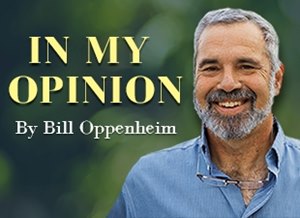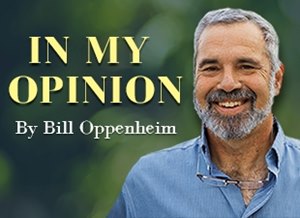An Eventful Week for Horse Racing


All weeks are eventful, certainly for those of us who follow racing internationally, but it seemed like the past week was particularly so.
There were a couple of races with great stories. Jumps racing isn't everybody's cup of tea, but for those who recognize it as an offshoot of flat racing, the Cheltenham Festival Mar. 12-15 can only be described as the jumps equivalent of Royal Ascot, minus the fancy gear. The total attendance over the four days was a massive 266,000, and, happily, the main reason is it really is a festival of top-class horse racing.
The co-feature on the third day is the March 14 Ryanair Chase, a grade 1 event known for its longtime sponsor, though, technically, it is called the Festival Trophy. It's run over 2 9/16 miles, which is an intermediate distance. A bit like the Breeders' Cup Dirt Mile (G1), it attracts horses who aren't quite good enough or can't stay the 3 1/4 miles of the grade 1 Cheltenham Gold Cup.
This year, 10-time champion jumps trainer Paul Nicholls had what looked like a better prospect for the Gold Cup (Clan des Obeaux, who finished fifth) and decided to point his other possible Gold Cup horse, Frodon, a 7-year-old by Nickname, to the Ryanair, to be ridden as usual by the personable 23-year-old Bryony Frost.
This was one of the best races in a long time; if you haven't seen it, go and watch it on YouTube. Frost went right to the front with Frodon, was harried the entire way, got passed by a horse on each side in the straight, and battled back to win by a narrow but decisive 1 1/4 lengths. These races take five minutes, and it was so exhilarating to watch. The interviews afterward were priceless; Frost was enthusiastic and bubbly but eloquent, too, and emotional—she could explain how she felt, and it was captivating. Who wouldn't love horse racing if you saw that?
The other great story this week was the win by the 3-year-old filly Mystic Journey at Flemington Race Course March 16 in the inaugural running of the AU$5 million All-Star Mile, which has not yet been designated black type. Fortunately for Mystic Journey, she already had the black type; two weeks prior, she became the first horse ever trained in Tasmania to win a grade 1 race when she defeated colts in the March 2 Australian Guineas (G1), also at Flemington.
The video of her "strapper" and trainer on Twitter was priceless. Talk about cheering for the underdog: Mystic Journey was an AU$11,000 yearling from Tasmania, and now they're talking about her as the new Winx. She gets a break now and will be pointed for one of Winx's signature races, the prestigious Ladbrokes Cox Plate (G1) in October. She is from the second crop of Needs Further, a group 3 winner over 1,600 meters (one mile) in Sydney by Encosta de Lago.
Those were the good news stories. The bad news, of course, are the 22 equine deaths at Santa Anita Park; the attendant terrible publicity for a business already fragile, anyway—at least in the United States. The announcement of an agreement March 16 that will phase out Lasix use at Santa Anita and Golden Gate Fields is welcome news as it will be a start in bringing California in line with International Federation of Horseracing Authority rules and will go a long way toward restoring international faith in the validity of California racing—as long as they can dramatically reduce equine fatalities, which, of course, isn't guaranteed by stopping Lasix use.
Though Belinda Stronach said The Stronach Group will "begin consultation with our stakeholders in other states to put these standards into effect in those jurisdictions, in the best interest of horse racing," and though it is commendable that after years of resistance, a powerful horsemen's group like Thoroughbred Owners of California recognizes the time to act is now, the whole episode illustrates how the Thoroughbred racing industry in America is compromised by fragmentation and the inability to assemble the legitimate interest groups into a national governing body that can set policy.
It has to be obvious to every head of every organization with initials that there needs to be a real effort, starting now, to create an effective national office that can speak with one voice and institute and enforce policy on which the constituent groups agree. Horse racing, constitutionally, has to be run by state government, but the time has come when everybody's statutory fiefdoms come together to create a national office—or there is a real possibility that within another 10-15 years, there will be no fiefdoms to administer.
This is going to have to be done voluntarily because the industry has no power to mandate it.
And why should there be a national office with real teeth? Two reasons: 1. It is the only way to reach and administer consensus within the industry; and 2. All the competition operates this way, and it works. And by "all the competition," I'm referring to competition for the entertainment dollar, because that's what we are—a segment of the entertainment industry.
We're very good at being in competition with each other, but that's only useful up to a point. In the bigger picture, horse racing is competing for the entertainment and gambling dollar, and we are somewhere between severely and terminally handicapped by not only not speaking with one voice but, worse, not acting with one policy.
OBS March: Some Good News
This is the fifth year the Ocala Breeders' Sales March 2-Year-Olds in Training Sale has been a two-day sale with a catalog of around 600 horses. It's also now the first 2-year-old in training sale, so it will be watched even more carefully for market trends.
There were 577 juveniles cataloged to this year's edition of the March sale, compared to 573 last year. In 2015 and 2016, the first two years of the new format, the number cataloged had been 610 and 613, respectively; only in 2017 had the number cataloged (677) deviated markedly from the plus-or-minus 600 range.
The fact that the number cataloged this year was virtually identical to 2018 makes year-to-year comparisons potentially more meaningful. This year, that seems to be the case in two important and linked respects: first, the number (312 at last report) and percentage of the horses sold (54%) were up significantly from 2018; and, second, the median was down by 24%, from $105,000 to $80,000.
But those two numbers are definitely connected, as OBS sales director Tod Wojciechowski was discussing with Ron Mitchell in the BloodHorse Daily edition March 14.
Wojciechowski said 117 of the 2-year-olds were listed as sold for $50,000 or less, compared with 87 last year. That difference of 30 selling for roughly a third, or less, of the sales average definitely figures to bring the average and median down. But a 9% increase in the clearance rate from the catalog—54% versus 45% last year—is a big increase in a market that is basically 50-50 or less, once a 2-year-old is cataloged, that it's actually going to get sold. So that return to 54% is so welcome, the consignors and sales company likely don't mind too much if other metrics decline.
With 55 more 2-year-olds sold this year than last, the gross increased a modest 5%, from $42.2 million to $44.7 million, while the average dropped 13%, to $143,328, from last year's $164,494. A total of 14 horses sold for $500,000 or more versus 17 last year, but, on the other hand, a record $2 million was spent for a March 2-year-old, and another, a Pioneerof the Nile colt, brought $1.2 million.
Of the 25 sires that had one sell for, or average, $200,000 or more at the sale, 15 had either one or two horses sell—there were 10 sires with three or more sold with an average of more than $200,000. Coolmore Ashford's American Pharoah had the highest average of those 10, with three sold averaging $458,333. Though he originally had nine cataloged, six went through the ring.
Four other sires with their first 2-year-olds made the list. Darby Dan's Tapiture , a winner of five graded stakes out of 16 that he competed in from a lifetime 18 starts, rang up six six-figure sales at last year's yearling sales off his $7,500 stud fee—his four OBS March 2-year-olds averaged $285,000. Three Chimneys Farm's Palace Malice , the 2013 Belmont Stakes (G1) and 2014 Metropolitan Handicap (G1) winner from Curlin 's first crop, had five average $268,000, including an $850,000 colt that sold to Mike Ryan.
Ocala Stud is pretty famous for getting sires started in Florida, such as Kantharos , for example, and Adios Charlie a few years ago. Six 2-year-olds by its new sire The Big Beast , a grade 1-winning sprinter by Yes It's True (this is the purest surviving "sprinting" Bold Ruler, via Is It True and Raja Baba), averaged $247,000 and included an $850,000 filly and a $450,000 colt.
Finally, Gainesway's Karakontie had three cataloged, and all three sold with a high of $365,000 and an average of $205,000.
Into Mischief had the highest average among the five sires with runners with three or more sold and a $200,000 or higher average, with seven sold, for an average of $297,857. Uncle Mo was next, with six sold for an average of $284,167, followed by: Super Saver (3/$273,333); Candy Ride (4/$249,750); and Flatter (3/$221,667).
For more columns by Bill Oppenheim, APEX Stallion Ratings, Brianne Stanley's Weekly Sales Ticker and more, please visit www.billoppenheim.com.
